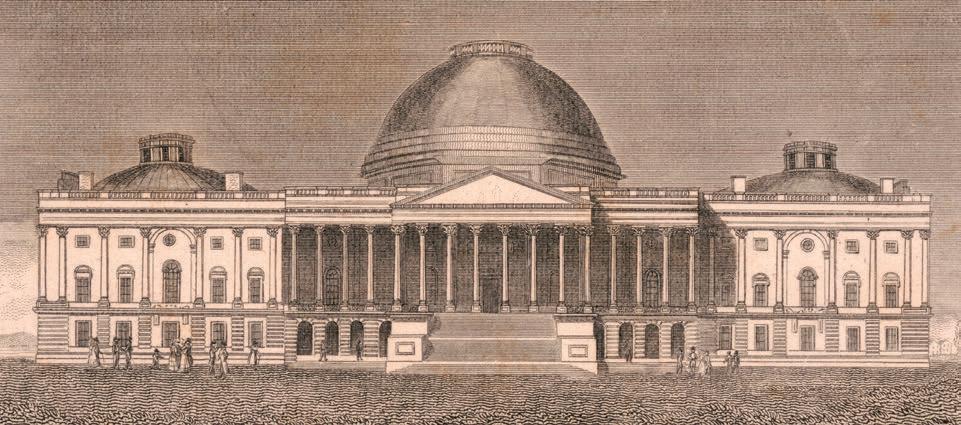
"Order! Order!"
The object of their scorn was the slight form standing defiantly at desk number 203. Two and a half years after leaving the White House, John Quincy Adams was back.
Adams's one-term presidency from 1825 to 1829 had been a struggle of partisan politics. His failed race for a second term had been bitter and nasty. His loss had convinced his family and colleagues that he had fought his last fight. Adams himself vowed, "to go into the deepest retirement and withdraw from all connections with public affairs." But the residents of the Massachusetts district in which Adams lived had other ideas. Impressed with his courage and integrity, they had elected him to the U.S. House of Representatives.
When questioned about his new position, Adams dismissed the idea that it was degrading for a former president-the leader of the nation to serve as a congressman. For Adams, public service was an honorable duty. "No election or appointment conferred on me ever gave me so much pleasure," he exclaimed in his diary. On December 5, 1831, the 64-year-old Adams took his seat and began a new, fateful chapter in his public life.
Through the early 1800s, slavery had grown into a divisive issue in U.S. politics. Other nations already had ended or limited the practice. Slaveholders across the American South grew increasingly fearful of the same fate and the threat it posed to their way of life on plantations and farms. At the same time, the idea of abolition-ending slavery and freeing all slaves began to spread steadily through northern states. Antislavery supporters bombarded Congress with petitions. Early petitions called for the end of slavery only in the District of Columbia. Eventually, calls grew to abolish the institution across the South.
Esta historia es de la edición October 2022 de Cobblestone American History Magazine for Kids.
Comience su prueba gratuita de Magzter GOLD de 7 días para acceder a miles de historias premium seleccionadas y a más de 9,000 revistas y periódicos.
Ya eres suscriptor ? Conectar
Esta historia es de la edición October 2022 de Cobblestone American History Magazine for Kids.
Comience su prueba gratuita de Magzter GOLD de 7 días para acceder a miles de historias premium seleccionadas y a más de 9,000 revistas y periódicos.
Ya eres suscriptor? Conectar

Eye in the Sky
An interview with Joe Piotrowski

Airborne Animals
Humans have taken to the skies in balloons, gliders, and airplanes-but we're not alone among the clouds. Animals of all sorts have evolved to harness wind power.

TAKING OFF
The Wright brothers expected airplanes to “take off,” but even they might be amazed at the way the airline industry has become big business. In the past, it was expensive to send something by plane.

GROWTH OF AN INDUSTRY
After their historic flight at Kitty Hawk in 1903, Wilbur and Orville Wright returned to Dayton, Ohio. They spent the next few years making adjustments and building additional versions of their powered aircraft in their bicycle shop.

WHY KITTY HAWK?
The Wright brothers searched carefully for the best place to test their gliders and flying machines. Their main concern was for good, steady winds. But they also hoped to find a remote location to allow them to perform tests away from the public eye.

Two Brothers From Ohio
Most people do not realize that the Wright brothers—Wilbur, born in 1867, and Orville, born in 1871—performed various scientific experiments before inventing their aircraft. For as long as anyone in their hometown of Dayton, Ohio, could remember, the Wright boys had worked on mechanical projects.

A Helping Hand
May 6, 1896. A group of people who had gathered beside the Potomac River, just south of the U.S. capital, grew quiet. Then, it erupted in cheers as a small, unmanned aircraft took to the skies and flew for more than half a mile. The flight came seven years before the Wright brothers’ first manned, powered flight. The inventor of the aircraft was Dr. Samuel Pierpont Langley.

THE IDEA MEN
People dreamed of flying thousands of years before the Wright brothers found success near Kitty Hawk, North Carolina. These dreamers, such as Leonardo da Vinci, studied birds flying and imagined how humans might do the same—if only they had wings. Other men developed a more hands-on approach to the topic. Early inventors made wings of cloth, glue, and feathers and tied these creations to their arms in an attempt to imitate nature.

Da Vinci's 4 Designs
Have you ever wondered how a bird flies? Leonardo da Vinci (1452–1519) did. He thought that understanding how a bird flies would provide the key to human flight. So, what did da Vinci learn from birds?

Silken Wings
Seven hundred years before the Wright brothers began experimenting with human flight, the Chinese had already mastered its secrets—with kites.